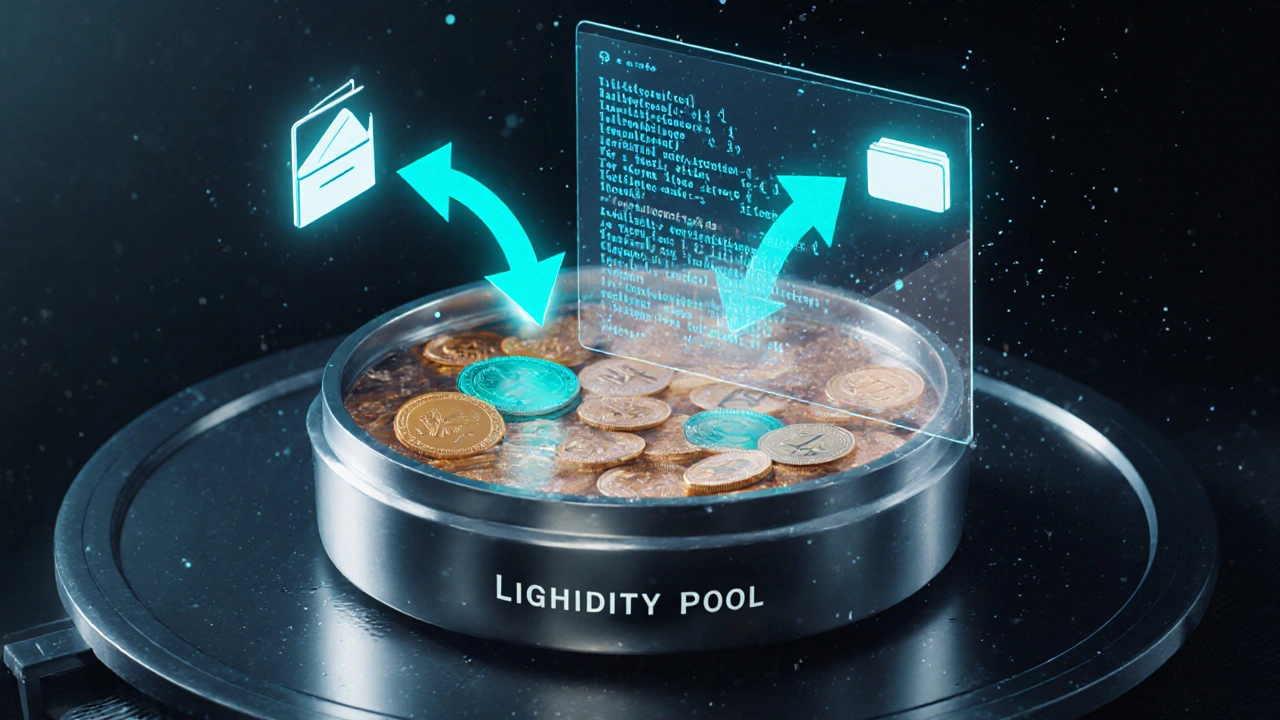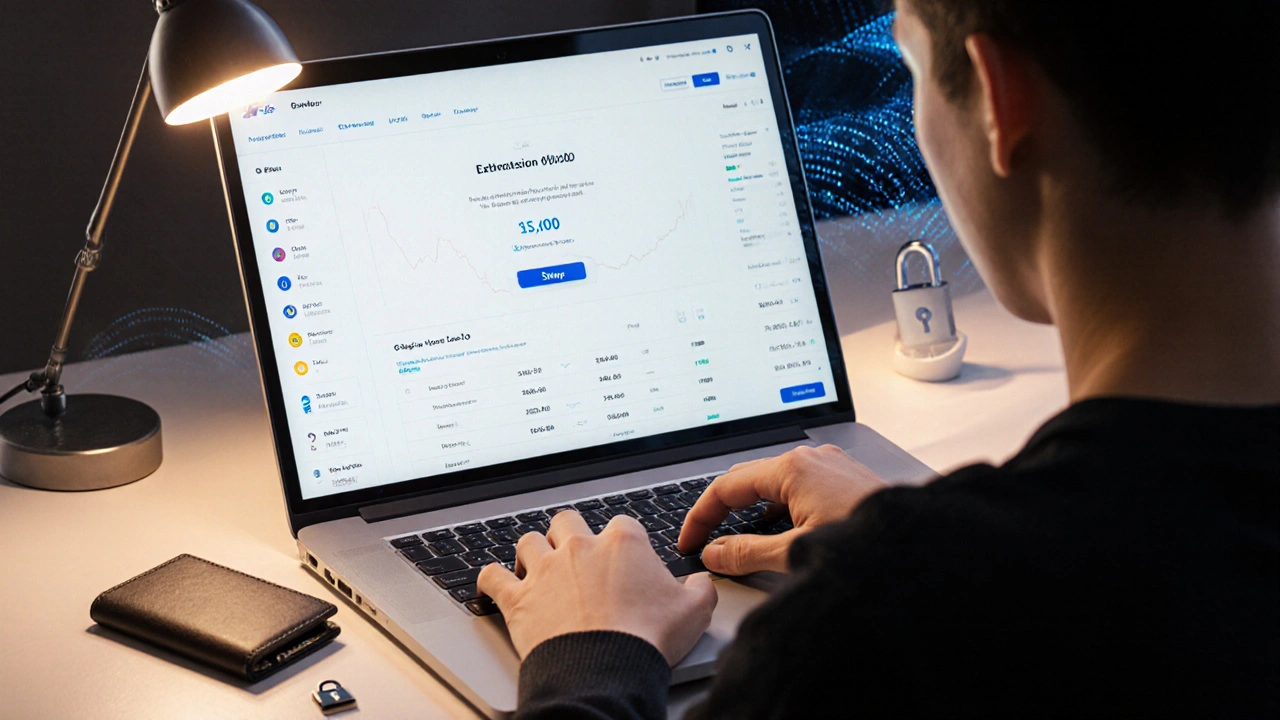
Ever wondered why some traders brag about never having to hand over their keys to an exchange? The secret is a decentralized exchange, or DEX, the peer‑to‑peer marketplace reshaping crypto trading.
Defining a DEX
DEX is a decentralized exchange that allows users to trade digital assets without a central authority. Unlike traditional platforms, a DEX runs on blockchain smart contracts, meaning the code-not a company-matches buyers and sellers.
Core Technology Behind DEXs
Two building blocks make a DEX possible:
- Smart contracts are self‑executing programs stored on a blockchain that enforce trade rules automatically.
- Liquidity pools hold pairs of tokens and provide the capital needed for instant swaps.
When you click “swap” on a DEX, a smart contract pulls the right amount of tokens from a liquidity pool, updates balances, and records the transaction on the ledger. No order book, no middleman.
Types of Decentralized Exchanges
Not all DEXs work the same way. They fall into three main families:
- Order‑book DEXs: Mimic traditional exchanges by maintaining a list of buy and sell orders on‑chain. Examples include dYdX and Loopring.
- Automated Market Makers (AMMs): Use pricing formulas (e.g., x·y=k) to set token prices based on pool balances. The most famous AMM is Uniswap.
- Hybrid DEXs: Combine an off‑chain order book with on‑chain settlement to boost speed while keeping decentralization. 0x Protocol follows this model.
Why Traders Choose DEXs
Here are the biggest draws:
- Full control of assets - you never hand over private keys.
- Privacy - no KYC, no personal data stored on a server.
- Censorship resistance - a single authority can’t block a trade.
- Lower fees - many DEXs charge only the network gas cost.

Risks You Should Know
Decentralization isn’t a silver bullet. Keep an eye on these pitfalls:
- Liquidity gaps - Small pools can cause high slippage.
- Front‑running - Bots may reorder transactions to profit.
- Smart‑contract bugs - Vulnerabilities can lead to lost funds.
- Regulatory gray zones - Some jurisdictions may restrict DEX usage.
Popular DEXs to Explore
Below are five platforms that dominate the space as of 2025:
- Uniswap - Ethereum‑based AMM, over $30B in daily volume.
- SushiSwap - Fork of Uniswap with added yield‑farm features.
- PancakeSwap - AMM on Binance Smart Chain, known for low fees.
- Curve - Specializes in stablecoin swaps with minimal slippage.
- dYdX - Order‑book DEX offering margin and perpetual contracts.
How to Start Trading on a DEX
Ready to give a DEX a spin? Follow these steps:
- Install a non‑custodial wallet (MetaMask, Trust Wallet, or Coinbase Wallet).
- Fund the wallet with the native blockchain token (ETH for Ethereum, BNB for BSC) to cover gas fees.
- Navigate to the DEX website and click “Connect Wallet”. Your wallet address will appear.
- Select the token pair you want to trade, enter the amount, and confirm the transaction in your wallet.
- If you’re feeling adventurous, provide liquidity: deposit equal values of two tokens into a pool and earn a share of the trading fees.

DEX vs. Centralized Exchange (CEX): A Quick Comparison
| Feature | DEX | CEX |
|---|---|---|
| Custody | User holds private keys | Platform holds keys |
| KYC/AML | Usually none | Required for most services |
| Liquidity Source | Liquidity pools or on‑chain order books | Central order book, often deeper |
| Trading Speed | Dependent on blockchain block time | Near‑instant, off‑chain matching |
| Fees | Network gas + small protocol fee | Variable maker/taker fees, withdrawal fees |
| Regulation Exposure | Lower, harder to shut down | Subject to local regulations |
Best Practices for Safe DEX Use
Keep your experience smooth by following these pro tips:
- Double‑check the contract address before swapping; phishing clones are common.
- Start with a small amount to test the waters, especially on new pools.
- Set a slippage tolerance (usually 0.5‑1%) to avoid unexpected price changes.
- Use hardware wallets for larger balances; they isolate private keys from the internet.
- Stay informed about protocol upgrades-some DEXs migrate to new contract versions.
Frequently Asked Questions
Can I trade fiat currencies on a DEX?
Most DEXs only support crypto‑to‑crypto pairs because they run on blockchain networks that don’t natively handle fiat. Some projects bridge fiat via stablecoins, but you’ll still be swapping a token, not raw dollars.
Do DEXs have price charts?
Yes. Most front‑ends integrate charting libraries (TradingView, Chart.js) that pull price data from on‑chain oracles. The charts are visual, but the actual trade execution still relies on the smart contract.
What’s the biggest DEX by volume in 2025?
Uniswap V3 on Ethereum remains the leader, averaging over $10 billion daily volume, followed closely by PancakeSwap on BSC.
Are DEX trades taxable?
Tax obligations depend on your jurisdiction. In most countries, any crypto‑to‑crypto swap is a taxable event, so you should log the fair market value at the time of trade.
How do I earn rewards by providing liquidity?
When you deposit tokens into a pool, you receive LP (Liquidity Provider) tokens representing your share. The pool distributes a portion of the trading fees to LP holders, typically proportional to their share.
Comments (8)
-
Jen Kay October 18, 2025
While the guide does a respectable job of covering the fundamentals of decentralized exchanges, remember that true mastery comes from rolling up your sleeves and executing a few swaps yourself.
Keeping your private keys in your own wallet is the cornerstone of financial sovereignty, and no amount of marketing can change that.
That said, the article’s recap of AMMs and order‑book models is spot‑on, even if it glosses over the nuances of gas fee spikes during network congestion.
Take the information as a launchpad, not a gospel, and you’ll avoid the common rookie pitfalls.
-
Michael Thomas October 18, 2025
American traders should prioritize US‑based DEXs to stay clear of foreign regulatory entanglements.
-
Abert Canada October 19, 2025
Decentralized finance really shines when borders blur, and Canadian developers have been busy building bridges that let anyone hop on a DEX without a passport.
Even if I’m not the loudest in the room, I can’t help but cheer when someone from Toronto or Vancouver contributes to a better liquidity pool for the whole community.
That collaborative spirit is what will keep the ecosystem thriving beyond any single nation‑state’s reach.
-
Xavier Lévesque October 21, 2025
Sure, because interacting with a smart contract is exactly as simple as ordering a latte at your local café.
-
Scott Perlman October 22, 2025
Try a tiny trade first.
-
Sandi Johnson October 23, 2025
Oh absolutely, nothing says “I love regulation” like building your own exchange on top of a global network.
-
mark nine October 24, 2025
If you’re new just connect MetaMask follow the steps the post listed and start with a small swap you’ll get the hang of it fast.
-
Eva Monhaut October 25, 2025
Liquidity pools can feel like enigmatic oceans at first, but once you understand the underlying math they become a playground for creativity.
Imagine depositing equal values of two tokens and watching the pool earn a steady stream of fees while you sip your coffee.
This passive income isn’t free, though; you’re exposed to impermanent loss whenever token prices diverge.
To mitigate that risk, many seasoned providers hedge with stablecoins or diversify across multiple pools.
Another layer of sophistication comes from swapping fee tiers, where lower fees attract volume but also increase competition for your share.
Don’t overlook the importance of token approval limits – granting unlimited allowance can be a security nightmare if a contract is compromised.
Always double‑check the contract address on official sources before clicking “Approve”.
Even though the UI may look sleek, the on‑chain transaction is immutable, so a slip‑up means real dollars lost forever.
For newcomers, starting with a well‑audited platform like Uniswap V3 or SushiSwap reduces the chance of encountering a buggy contract.
Keep an eye on the gas price; during peak congestion you might pay more in fees than the trade itself is worth.
Some bots exploit front‑running by sandwiching your transaction, so setting a reasonable slippage tolerance can help protect you.
Layer‑2 solutions are emerging that dramatically cut gas, making small trades economically viable.
Still, remember that moving assets to a Layer‑2 requires an additional bridge transaction, which carries its own risks.
In the end, treating each swap as a learning experiment will pay off far more than chasing the highest APY at all costs.
